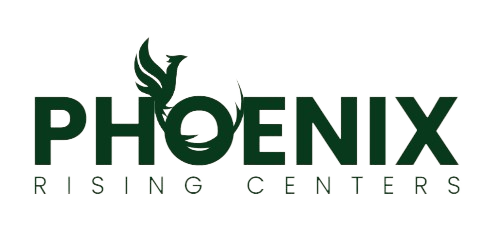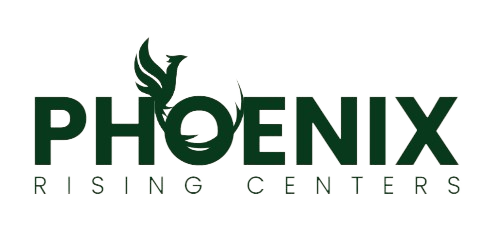Exploring Therapy Innovations for a Holistic Life
In today's fast-paced world, achieving a holistic life can feel challenging. Fortunately, therapy innovations are opening up new pathways to well-being, offering diverse approaches that cater to the mind, body, and spirit. This blog explores some of the most exciting developments in therapy, aimed at helping you live a balanced and fulfilling life.
Understanding Holistic Therapy
Holistic therapy considers the complete person, focusing on physical, mental, emotional, and spiritual well-being. This approach recognizes the interconnectedness of all life aspects and promotes healing through balance. It delves deep into the understanding that each individual's experience is unique, necessitating a personalized approach to treatment. By intentionally creating a synthesis between traditional and alternative therapies, holistic therapy paves the way for comprehensive healing. Clients often find that integrating their personal beliefs and life experiences into therapy enhances their healing journey.
In a world where separation and specialization in medical treatments are common, the holistic approach stands out by providing a more personalized care model. Imagine addressing not just a single symptom but looking at how your lifestyle, diet, stress levels, and emotional health contribute to your overall well-being. Factors such as chronic stress or anxiety don’t always manifest just psychologically but can impact our physical bodies, leading to conditions like hypertension or digestive issues. By acknowledging these connections, holistic therapy aims to provide lasting solutions rather than temporary fixes.
Mindfulness and Meditation Techniques
Mindfulness and meditation have become central to many therapeutic practices. These techniques teach individuals to focus on the present moment, reduce stress, and improve emotional resilience, contributing significantly to a holistic lifestyle. Practicing mindfulness can be as simple as taking a few deep breaths during your daily routine or setting aside time for a dedicated meditation session. The benefits of mindfulness are far-reaching. For instance, mindful breathing, which involves paying close attention to your breath flow, can evoke a relaxation response, reduce stress, and foster emotional well-being. As people become more aware of their physiological responses, they can better manage emotions and create a harmonious existence.
Meditation reduces the clutter of the mind, leading to improved concentration and a profound sense of inner peace. There are several forms of meditation, including guided, unguided, and movement-based. Each offers unique benefits, allowing individuals to navigate and process their thoughts more clearly. Sitting in silence might seem simple, yet it can elicit significant personal revelations. Research has shown that regular meditation practice can alter brain structure, enhancing an individual's ability to manage stress and emotions effectively.
The Rise of Virtual Therapy
Virtual therapy has been a groundbreaking innovation, providing access to mental health support regardless of location. With the help of technology, individuals can connect with therapists from the comfort of their own homes, making therapy more accessible than ever. This technological advancement breaks down geographical and logistical barriers, providing consistent support, even to those in remote areas. Moreover, virtual sessions tend to be more flexible in terms of scheduling, accommodating diverse lifestyles.
Adapting to digital platforms has encouraged therapists to incorporate various multimedia tools, enriching the therapeutic experience. Tools like video calls, chat options, and email support assist in creating a robust therapeutic alliance despite any physical distance. As noted in recent studies, the efficacy of virtual therapy can be equivalent to that of face-to-face sessions, especially for individuals who may find face-to-face interactions stressful. This avenue opens up new possibilities for those who may otherwise have avoided seeking support due to stigma or privacy concerns.
Integrating Art and Creativity
Art therapy uses creative processes to help individuals express feelings and improve mental health. By engaging with different art forms, people can explore their emotions and foster a sense of relief and self-discovery. Art therapy caters to those who may have difficulties expressing themselves through traditional verbal communication, offering an alternative language of creation. Whether it's painting, drawing, or sculpting, the process allows individuals to tap into unconscious emotions and facilitates a deeper understanding of their internal worlds.
Engaging in creative pursuits not only alleviates stress but also fosters problem-solving skills. Activating art as a medium of therapy can aid in recognizing patterns in behavior, provide new insights into personal relationships, and instigate a profound self-awareness. As individuals create art, they often enter a state similar to meditation, contributing to relaxation and emotional release. Studies have demonstrated the therapeutic effects of creative expression as an essential facet of a holistic therapeutic regimen, highlighting its role in promoting academic performance, enhancing social skills, and improving mental health.
Innovative Movement Therapies
Movement-based therapies, such as dance and yoga, promote physical health and emotional release. These approaches focus on the body's role in emotional expression and encourage the discovery of new avenues for personal growth. Dance therapy, for instance, employs choreography and improvisational movement to help individuals process and integrate emotional experiences. This form of therapy transcends language barriers, connecting the mind and body with motion as a primary form of expression.
Yoga is another powerful tool in movement therapy, emphasizing breath control, meditation, and physical postures to enhance overall well-being. Studies have shown that yoga can significantly reduce anxiety and depression levels. Regular practice encourages mindfulness, strengthens the body, and improves neural pathways, contributing to cognitive clarity and emotional balance. Movement therapies invite a unique exploration of physical space and limitations, providing an expansive perspective and fostering self-awareness.
Embracing Transformative Therapy
Embracing therapy innovations can be a transformative step towards a holistic life. With a variety of approaches available, finding one that resonates with you can enhance your well-being in profound ways. These innovations remind us that healing and growth are a personal journey, and there is always a new path to explore on the road to living fully. To start your journey today, visit our homepage and discover the possibilities awaiting you.


